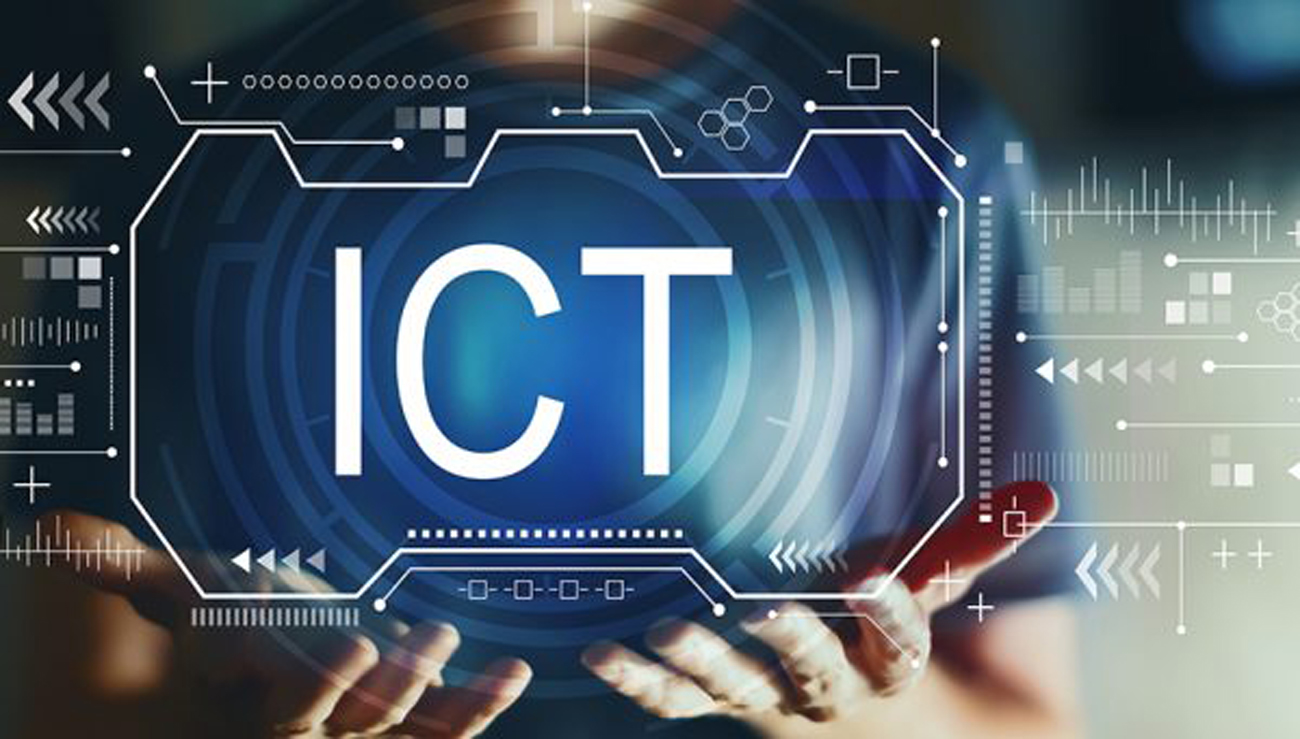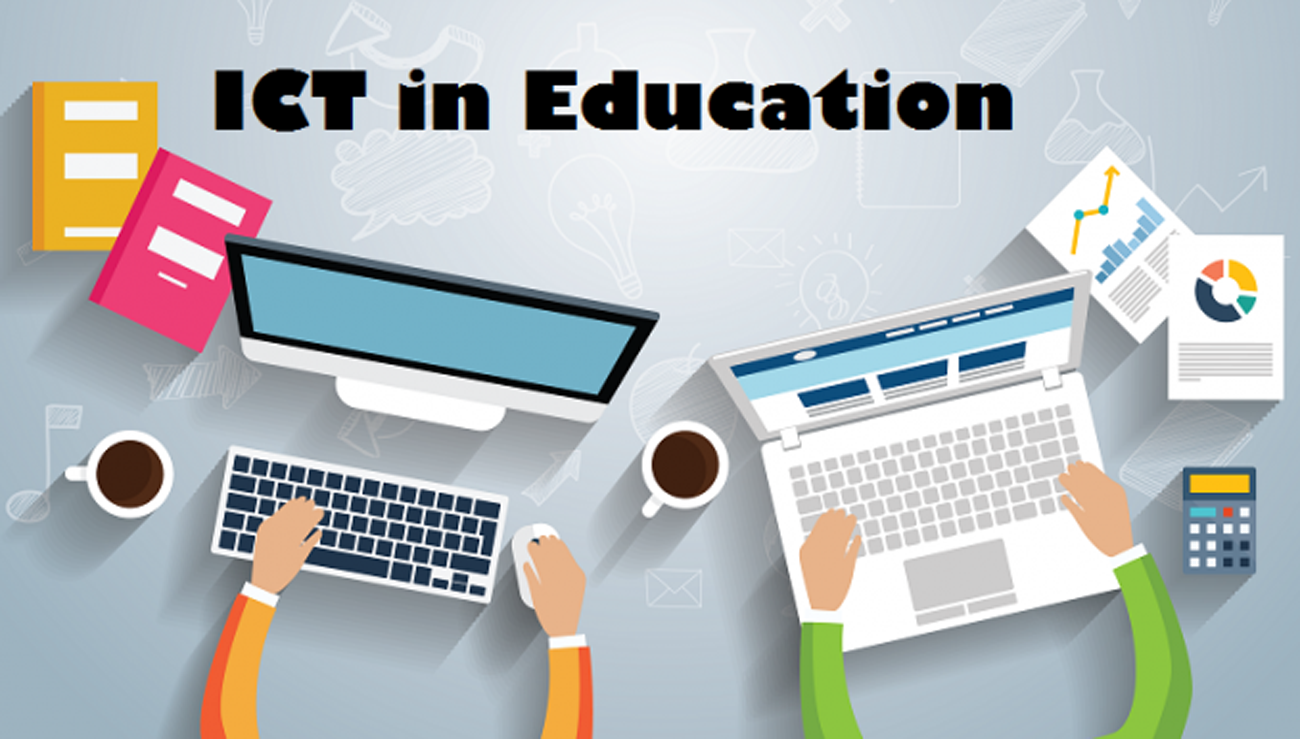
ICT Integration in Teaching and Learning: Empowerment of Education with Technology
Abstract:
Information and communication technology (ICT) in teaching learning means making the effective use of ICT to teach the subject matter in a more interesting manner to make learning easy and fast for the students. It makes use of projectors, internet, multimedia, audio- visual aids and much more for teaching. The use of ICT in teaching learning have changed the whole concept of education and had proved to be of great benefit both for the teachers as well as the students. Through ICT, teachers get an opportunity to use new innovations in their teaching and present the study material in a more refined manner which is easily understood by the students and apart from this, ICT usage in teaching learning by the teachers gives an opportunity to the teacher to get acquainted with the new innovation and become contributors to its use in education. The students gain a lot by learning through ICT and they learn to seek knowledge on their own by using ICT. They also get an opportunity to share their knowledge with others through ICT. But there are certain factors which effect the successful ICT integration in teaching learning. This paper throws light on the benefits of ICT usage in teaching learning, three phases to successful ICT integration, factors influencing ICT by teachers, the barriers to successful ICT integration, implications to check barriers, and the changed role of the teachers.
Author(s):
Shikha Kler, research Scholar (JRF), Department of Education, Panjab University, Chandigarh-160014, India
DOI:
Keywords:
References:
Al-Alwani, A. (2005). Barriers to Integrating Information Technology in Saudi Arabia Science Education. Doctoral dissertation, the University of Kansas, Kansas.
Al-Oteawi, S. M. (2002). The perceptions of administrators and teachers in utilizing information technology in instruction, administrative work, technology planning and staff development in Saudi Arabia. Doctoral dissertation, Ohio University, Ohio.
Anderson, R. E. & Dexter, S. (2005). School technology leadership: An empirical investigation of prevalence and effect. Educational Administration Quarterly, vol. 41, no. 1, pp. 49- 82. http://dx.doi.org/10.1177/0013161X04269517
Andoh, CB (2012). Factors influencing teachers’ adoption and integration of information and communication technology into teaching: A review of the literature. International Journal of Education and Development using Information and Communication Technology (IJEDICT), 2012, Vol. 8, Issue 1, pp. 136-15. Retrieved on 16th May 2014 from http://ijedict.dec.uwi.edu//viewarticle.php?id=1361.
Baek, Y.G., Jong, J., & Kim, B. (2008). What makes teachers use of technology in the classroom? Exploring the factors affecting facilitation of technology with a Korean sample. Computers and Education, vol.50, no. 8, pp. 224-234. http://dx.doi.org/10.1016/j.compedu.2006.05.002
Balanskat, A., Blamire, R., & Kefala, S. (2006). A review of studies of ICT impact on schools in Europe European Schoolnet.
Bandura, A. (1997). Self-efficacy: The exercise of control. New York: Freeman.
Becta. (2004). A review of the research literature on barriers to the uptake of ICT by teachers. Retrieved June 10, 2010, from http://partners.becta.org.uk/page_documents/research/barriers.pdf
Beggs, T. A. (2000, April 9-11, 2000). Influences and barriers to the adoption of instructional technology. Paper presented at the Proceedings of the Mid-South Instructional Technology Conference, Murfreesboro, TN.
Bingimlas, K. A. (2009). Barriers to the successful integration of ICT in teaching-learning environments: A review of the literature. Eurasia Journal of Mathematics, Science & Technology Education, 2009, 5(3), 235-245. Retrieved on 16th May 2014 from http://www.ejmste.org/v5n3/EURASIA_v5n3_Bingimlas.pdf.
Bordbar, F. (2010). English teachers’ attitudes toward computer-assisted language learning. International Journal of Language Studies, vol. 4, no. 3, pp. 27-54.
Brinkerhoff, J. (2006).Effects of a long-duration, professional development academy on technology skills, computer self-efficacy and technology integration beliefs and practices.
Cox, M., Preston, C., & Cox, K. (1999a). What factors support or prevent teachers from using ICT in their classrooms? Paper presented at the British Educational Research n Association Annual Conference. Retrieved August 2, 2008, from http://leeds.ac.uk/educol/documents/00001304.htm
Diehl, D.E. (2005). A study of faculty-related variables and competence in integrating instructional technologies into pedagogical practices. Unpublished doctoral dissertation. Texas Southern University.
Dillon, A., & Morris, M. G. (1996). User Acceptance of Information Technology: Theories and Models. Annual Review of Information Science and Technology, vol. 31, pp. 3 -32.
Ertmer, P. (1999). Addressing first-and second-order barriers to change: Strategies for technology integration. Educational Technology Research and Development, 47(4), 47-61. http://dx.doi.org/10.1007/BF02299597
Giordano, V. (2007). A professional development model to promote internet integration into P -12 teachers’ practice: A mixed method study. Computers in the schools, vol. 24, no.3/4, pp. 111-123. http://dx.doi.org/10.1300/J025v24n03_08
Granger, C.A., Morbey, M.L., Lotherington, H., Owston, R.D.& Wideman, H.H. (2002). Factors contributing to teachers’ successful implementation of IT. Journal of Computer Assisted Learning, vol. 8, pp. 480-488. http://dx.doi.org/10.1046/j.0266-4909.2002.00259.doc.x
Groff, J., & Mouza, C. (2008). A framework for addressing challenges to classroom technology use. AACE Journal, vol. 16, no. 1, pp. 21-46. Retrieved on 14th May, 2014 from http://www.jengroff.net/publications1_files/i5Framework_GROFF-MOUZA.pdf.
Hernandez-Ramos, P. (2005). If not here, where? Understanding teachers’ use of technology in Silicon Valley schools. .Journal of Research on Technology in education, vol. 38, no. 1, pp.39-64 http://dx.doi.org/10.1080/15391523.2005.10782449
Hew, K. F., & Brush, T. (2007). Integrating technology into K-12 teaching and learning: current knowledge gaps and recommendations for future research. Educational Technology Research and Development, vol. 55, pp. 223- http://dx.doi.org/10.1007/s11423-006-9022-5
Higher education Distance Education, vol. 28, no. 3, pp. 313-333.
ICT in education. Retrieved on 12th May 2014 from en.wikibooks.org/wiki/ICT_in_Education/Definitions_of_Terms.
Jones, C.A. (2001) Teach Support: Preparing teachers to use technology. Principal Leadership, vol. 1, no. 9, pp. 35-39.
Jones, A. (2004). A Review of the Research Literature on Barriers to the Uptake of ICT by Teachers. British Educational Communications and Technology Agency. Retrieved May 20, 2010, from http://www.becta.org.uk
Journal of Research on Technology in Education, vol. 39, no. 1, pp. 22-43 http://dx.doi.org/10.1080/15391523.2006.10782471
Kay, R. (2006). Addressing gender differences in computer ability, attitudes and use: The laptop effect. Journal of Educational Computing Research, vol. 34, no. 2, pp. 187- 211. http://dx.doi.org/10.2190/9BLQ-883Y-XQMA-FCAH
Keengwe, J., & Onchwari, G. (2008). Computer technology integration and student learning: Barriers and promise, Journal of Science Education and Technology, vol. 17, pp. 560–565. http://dx.doi.org/10.1007/s10956-008-9123-5
Lai, K.W., Pratt, K. (2004). Information Communication Technology (ICT)in secondary schools: The role of the computer coordinator. British Journal of Educational Technology, vol. 35, no. 4, pp. 461-475. http://dx.doi.org/10.1111/j.0007-1013.2004.00404.x
Lawless, K., & Pellegrino, J. (2007). Professional development in integrating technology into teaching and learning: Knowns, unknowns and ways to pursue better questions and answers. Review of Educational Research, vol. 77, no. 4, pp. 575-614. http://dx.doi.org/10.3102/0034654307309921
Lefebvre, S., Deaudelin, D., & Loiselle, J. (2006, 27th – 30th November). ICT implementation stages of primary school teachers: The practices and conceptions of teaching and learning. Retrieved on 14th May, 2014 from www.aare.edu.au/data/publications/2006/lef06578.pdf.
Lewis, S. (2003). Enhancing teaching and learning of science through use of ICT: Methods and materials. School Science Review. 84(309), 41-51.
Markauskaite, L. (2006). Gender issues in preservice teachers’ training: ICT literacy and online learning. Australasian Journal of Educational Technology, vol. 22, no. 1, pp.
Niederhauser, D.S. & Stoddart, T. (2001). Teachers’ instructional perspectives and use of educational software. Teaching and teacher education, vol. 17, pp.15-s31. http://dx.doi.org/10.1016/S0742-051X(00)00036-6
Norris, C., T., Sullivan, J., Poirot, & Soloway, E. (2003). No access, no use, no impact: Snapshot surveys of educational technology in K-12, Journal of Research on Technology in Education, vol. 36, no. 1, pp. 15-27. http://dx.doi.org/10.1080/15391523.2003.10782400
Pelgrum, W. J. (2001). Obstacles to the integration of ICT in education: results from a worldwide educational Peralta, H., Costa, F.A. (2007). Teachers’ competence and confidence regarding the use of ICT. Educational Sciences Journal, vol. 3, pp. 75-84.
Plomp, T., Anderson, R. E., Law, N., & Quale, A. (Eds.). (2009). Cross-national information and communication technology: policies and practices in education. Charlotte, N.C.: Information Age Publishing pp. 334–346.
Ratshitanga, NT (2008) Benefits and challenges that accompany successful integration and implementation of ICT in teaching and learning. Retrieved on 12th May, 2014 from www.conf2008.school.za/…/ICT%20Benefits%20and%20Challenges.
Rogers, E.M. (2003).Diffusion of innovations. New York: Free Press.
Rozell, E.J., & Gardner, W.L. (1999). Computer-related success and failure: a longitudinal field study of the factors influencing computer-related performance. Computers in Human Behavior, vol. 15, no. 1, pp. 1-10. http://dx.doi.org/10.1016/S0747-5632(98)00030-2
Russell, G., & Bradley, G. (1997). Teachers’ computer anxiety: Implications for professional development. Education and Information Technologies, vol. 2, pp.17-30. http://dx.doi.org/10.1023/A:1018680322904
Samarawickrema, G. & Stacey, E. (2007). Web-based learning and teaching: A case study in higher education Distance Education, vol. 28, no. 3, pp. 313-333 http://dx.doi.org/10.1080/01587910701611344
Schiler, J. (2003). Working with ICT: Perceptions of Australian principals, Journal of Educational Administration, vol. 41, no. 3, pp. 171-185. http://dx.doi.org/10.1108/09578230310464675
Sicilia, C. (2005). The Challenges and Benefits to Teachers’ Practices in Constructivist Learning Environments Supported by Technology. Unpublished master’s thesis, McGill University, Montreal.
The integration of ICTs into the teaching and learning process to promote student learning by Antionette vd Merwe. Retrieved from http://www.cet.uct.ac.za/pie/docs/vdMerwe_Chp3.pdf. –506.
Tondeur, J., Valcke, M., & van Braak, J. (2008). A multidimensional approach to determinants of computer use in primary education: Teacher and school characteristics. Journal of Computer Assisted Learning, vol. 24, pp. 494. http://dx.doi.org/10.1111/j.1365-2729.2008.00285.x
U.S. Department of Education. National Centre for Education Statistics. (2000). Teachers’ tools for the 21st Century: A Report on teachers’ use of technology.
Vannatta, R. & Fordham, N. (2004). Teacher dispositions as predictors of classroom technology use, Journal of Research on Technology in Education, vol. 36, no. 3, pp. 253-271, vol. 34, no.2, pp. 171-86.
Volman, M. and van Eck, E. (2001). Gender equity and information technology in education: The second decade. Review of Educational Research, vol. 71, no. 4, pp. 613-634. http://dx.doi.org/10.3102/00346543071004613
Wong, E.M.L. & Li, S.C. (2008). Framing ICT implementation in a context of educational change: a multilevel analysis. School effectiveness and school improvement, 19(1), 99-120. http://dx.doi.org/10.1080/09243450801896809
Wozney, L., Venkatesh, V., & Abrami, P.C. (2006). Implementing computer technologies: Teachers’ perceptions and practices. Journal of Technology and teacher education, vol. 14, no.1, pp. 173-207.
Yee, D. L. (2000). Images of school principals’ information and communication technology leadership. Technology, Pedagogy and Education, vol. 9, no. 3. http://dx.doi.org/10.1080/14759390000200099
Yildirim, S. (2007). “Current Utilization of ICT in Turkish Basic Education Schools: A Review of Teacher’s ICT Use and Barriers to Integration”. International Journal of Instructional Media


